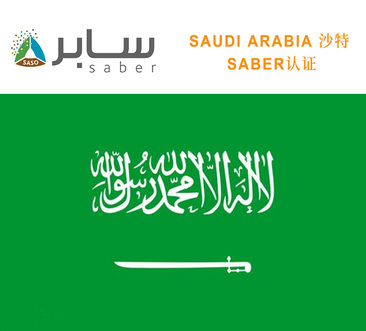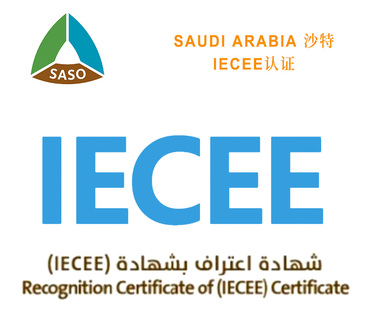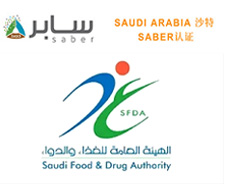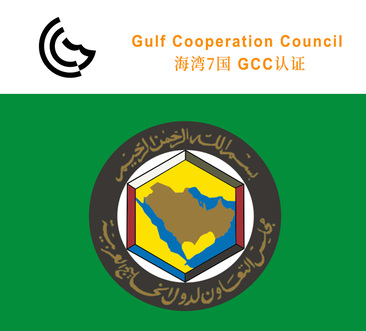News
-
MORE
202403-06
Application Guidelines for SASO Saudi Arabian Certification Applying for Saudi Arabian Standards Organization certification requires following a series of processesAnd procedures to ensure compliance of your product in the Saudi Arabian market. The following is a general SASO certification operation guide:1. Determine product scope: First, determine if your product requires SASO certification. Different types of products require different Certification, therefore it is necessary to ensure that your product meets the requirements of SASO certification.2. Choose a certification body: Choose a certification body recognized by SASO to conduct relevant testing, auditing, and certification.You can find a list of recognized certification bodies on SASO's official website.3. Prepare documents and materials: Prepare necessary documents and materials, including but not limited to the following:Product technical specifications and descriptions.Manufacturing processes and quality control processes.Design drawings and product samples.Test report to prove that the product complies with relevant international standards or SASO standards.Product identification and packaging information.Quality certificates, such as ISO certification (if applicable).4. Product testing: Under the guidance of certification bodies, submit product samples for testing. Testing will be based on product type andThe requirements of certification bodies vary, usually including performance testing, safety testing, and quality control testing.5. Certification review and inspection: The certification body will review the product's documents and test reports, and may conduct factory inspections,To ensure that the product meets SASO certification requirements.6. Submit SASO certification application: Once the product has passed the testing, review, and inspection, you can submit the SASO to the certification bodyCertification application, while providing necessary documents and information. The certification body will assist you in preparing and submitting your application.7. SASO Certification Review and Review: The certification body will submit your application to SASO for review and review.This process may take some time, depending on the type of product and the complexity of the application.8. Obtaining SASO certification: If the product has passed SASO certification, you will receive a SASO certification certificate, which proves that the product isCompliant in the Saudi Arabian market. This certificate usually needs to be indicated on the product.9. Regular supervision and updates: SASO certification usually requires regular product supervision and inspection to ensure that products continue to be in the marketCompliance. In addition, if there are changes or updates to the product, SASO needs to be notified in a timely manner and relevant changes and updates must be metRequirements.
-
MORE
202403-06
The EU General Product Safety Regulations have officially come into effect The General Product Safety Regulation (GPSR) of the European Union officially came into effect on June 12, 2023. The new regulations aim to address the major social change issues that have affected consumer product safety in the past two decades, such as accelerating digitization, new technology development, and globalized supply chains. The new General Product Safety Regulations aim to ensure the safety of all consumer products in the EU market, including non food products sold both offline and online. Specifically, through the following channels:Key factors in consumer product safety assessment, such as the constantly evolving characteristics of the product or its interrelationships;Improve product safety conditions between online and offline sales;Develop specific product safety requirements for the online market to protect consumers from dangerous products sold in the online market;Expand the obligation for all non coordinated products imported into the EU to have economic operators responsible for product safety issues within the EU;Provide necessary tools for EU national institutions to strengthen their enforcement powers;Require consumers to directly contact standardized recalls through announcements to ensure the effectiveness of product recalls.
-
MORE
202403-06
Recent significant regulatory updates from TEC and BIS in India In the first half of June 2023, the Telecommunications Engineering Centre of India (TEC) and the Bureau of Indian Standards (BIS) released several important regulatory updates, with the following key points:(1) Category and date of experimental products for expanding BIS parallel testing:BIS India has extended the trial date for parallel testing to December 31, 2023. The project initially only opened up mobile phone products, but now it has added product categories including wireless headphones/earphones and laptops/tablets. The parallel testing conditions originally released by BIS on December 19, 2022 remain unchanged.(2) Extend the mandatory date for mandatory safety testing (ITSAR):India has extended the mandatory dates for Wi Fi CPE and IP router mandatory security testing (ITSAR) from July 1, 2023 to January 1, 2024.(3) Exemption of Cellular Network Repeater Test Parameters (MTCTE):TEC India announced an exemption for specific testing items of cellular network repeater products under MTCTE certification. Unless otherwise notified, the exemption is valid until June 30, 2023.
-
MORE
202403-06
India plans to revise the regulations on alcoholic beverages On May 11, 2023, the Food Safety Standards Authority of India (FSSAI) released D L. Consultation document No. 33004/99REGD, proposing to revise the regulations on alcoholic beverages, with a feedback period of 60 days. Main content:1. Add the definition of low alcohol beverages, with an alcohol content of 0.5 to 8.0%, and allow the addition of fruit juice, vegetable juice, sugar, salt, or carbon dioxide; Add the definitions of original country wine and original Indian wine, which are alcoholic beverages made by fermenting and distilling fermented molasses, maltose syrup, potatoes, cassava, fruits, etc; Wine made from fruits other than grapes is changed to: fruit wine (excluding wine) and honey wine; Definition of honey wine; Beverages containing wine do not require the addition of carbon dioxide for acidification treatment;2. Revise the definition of craft beer, and revise Indian rural wine to Indian Baijiu or original Baijiu or original Baijiu; Classify craft beer according to the range of alcohol content; The mixture of carbon dioxide and nitrogen is only suitable for craft beer;3. Add specific regulations to the list of distilled spirits in India, the list of undistilled spirits in India, and the list of low alcohol spirits (with an alcohol content of 4-5%). For example, distilled spirits are allowed to use barley as the raw material; Specific regulations for the use of grapes and other substances in white or red wine without distillation.
HOT services
RELATED NEWS
-
+ Market demand for electrical certification SASO in Middle Eastern countries.
2024-03-06
-
+ The CE certification standards and process steps for European regulations.
2024-03-06
-
+ Application Guidelines for SASO Saudi Arabian Certification
2024-03-06
-
+ Preparation of ROHS certified environmental directive compliance documents - Material requirements:
2024-03-06
-
+ The EU General Product Safety Regulations have officially come into effect
2024-03-06
-
+ Recent significant regulatory updates from TEC and BIS in India
2024-03-06
-
 Tel
TelHotline
+86 400-826-3320
-
 WhatsApp
WhatsAppWhatsApp
+86-15355373320-penny
+86-13362995501-laura
-
Skype
-
 E-mail
E-mail -














